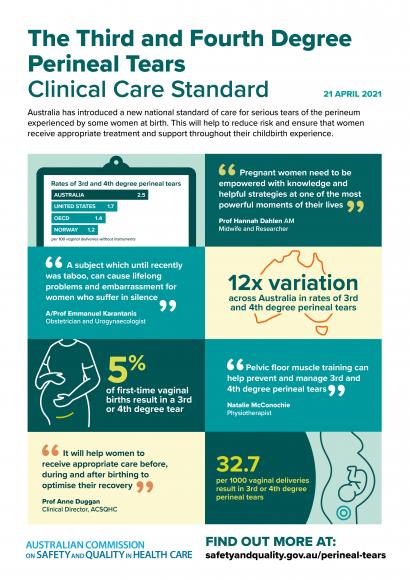The Third and Fourth Degree Perineal Tears Clinical Care Standard will help to ensure that women receive appropriate treatment and support throughout their childbirth experience.
This infographic outlines key data highlights, as well as commentary from experts in maternity care participating in the Commission's launch event on 21 April 2021.

